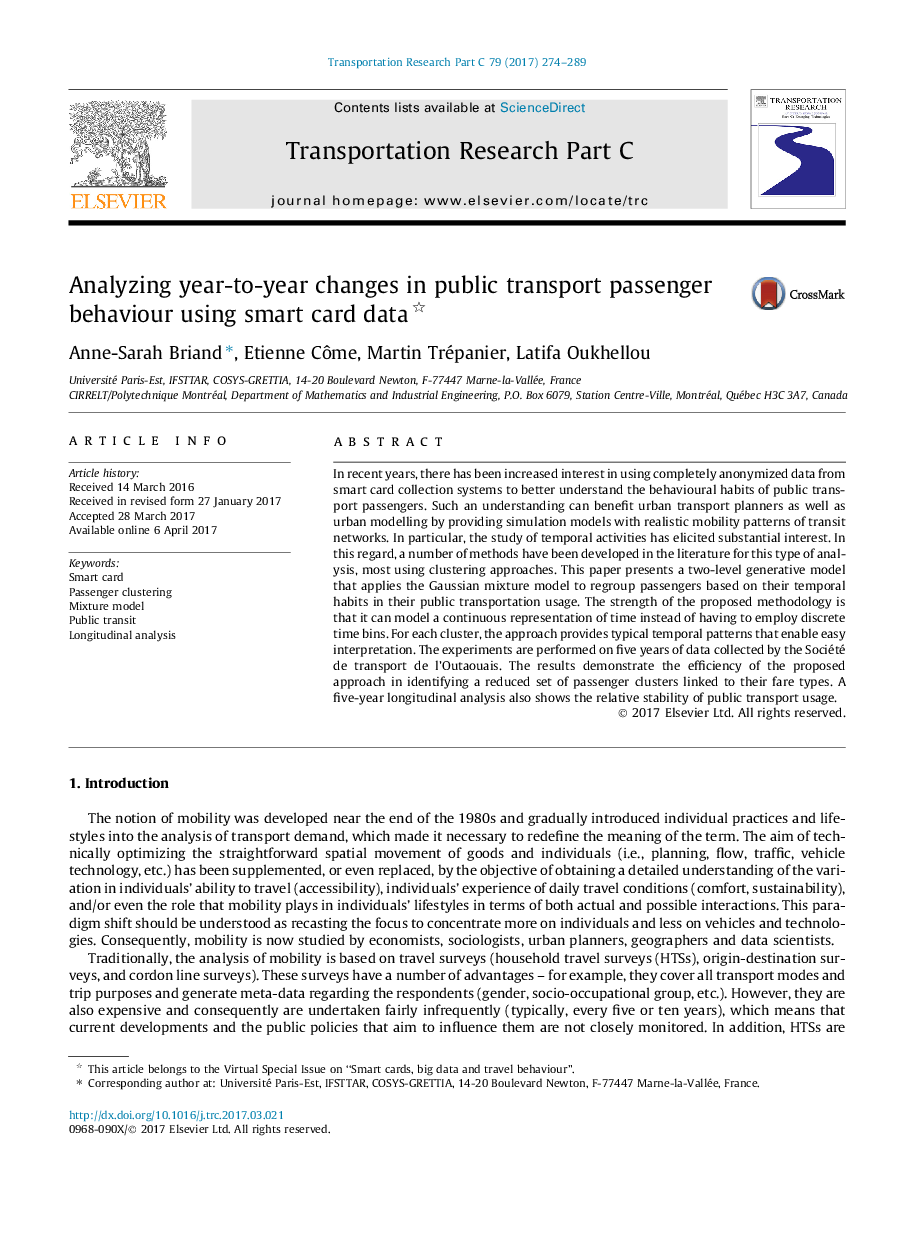| Article ID | Journal | Published Year | Pages | File Type |
|---|---|---|---|---|
| 4968566 | Transportation Research Part C: Emerging Technologies | 2017 | 16 Pages |
Abstract
In recent years, there has been increased interest in using completely anonymized data from smart card collection systems to better understand the behavioural habits of public transport passengers. Such an understanding can benefit urban transport planners as well as urban modelling by providing simulation models with realistic mobility patterns of transit networks. In particular, the study of temporal activities has elicited substantial interest. In this regard, a number of methods have been developed in the literature for this type of analysis, most using clustering approaches. This paper presents a two-level generative model that applies the Gaussian mixture model to regroup passengers based on their temporal habits in their public transportation usage. The strength of the proposed methodology is that it can model a continuous representation of time instead of having to employ discrete time bins. For each cluster, the approach provides typical temporal patterns that enable easy interpretation. The experiments are performed on five years of data collected by the Société de transport de l'Outaouais. The results demonstrate the efficiency of the proposed approach in identifying a reduced set of passenger clusters linked to their fare types. A five-year longitudinal analysis also shows the relative stability of public transport usage.
Related Topics
Physical Sciences and Engineering
Computer Science
Computer Science Applications
Authors
Anne-Sarah Briand, Etienne Côme, Martin Trépanier, Latifa Oukhellou,
